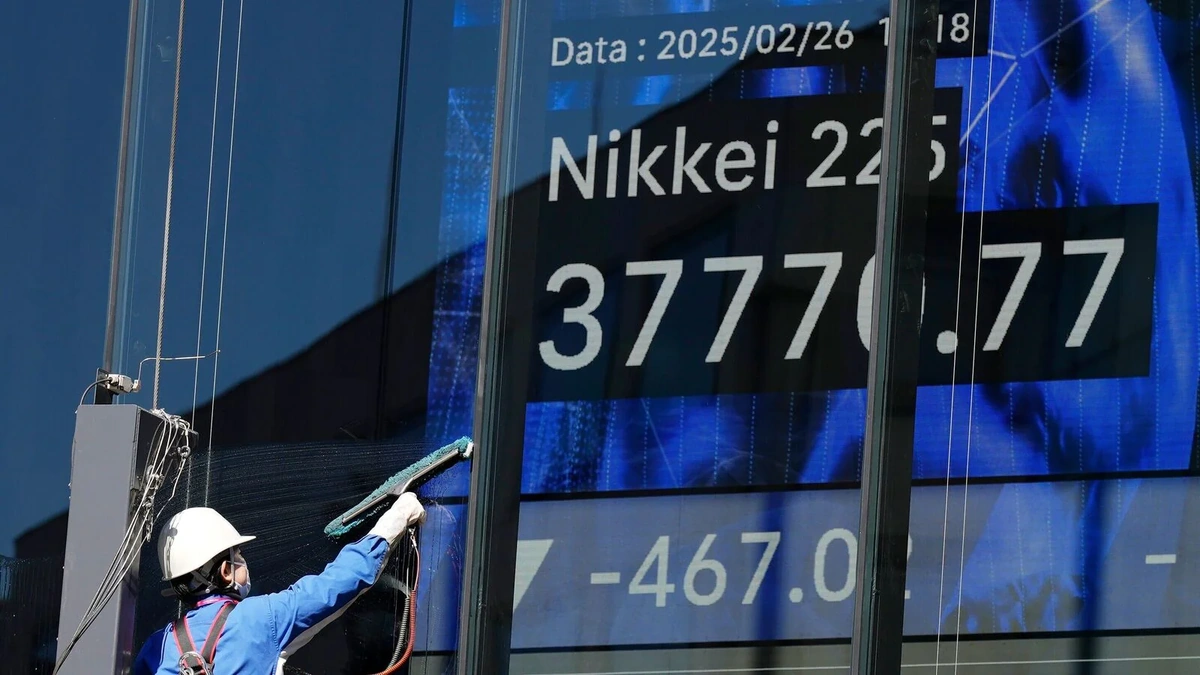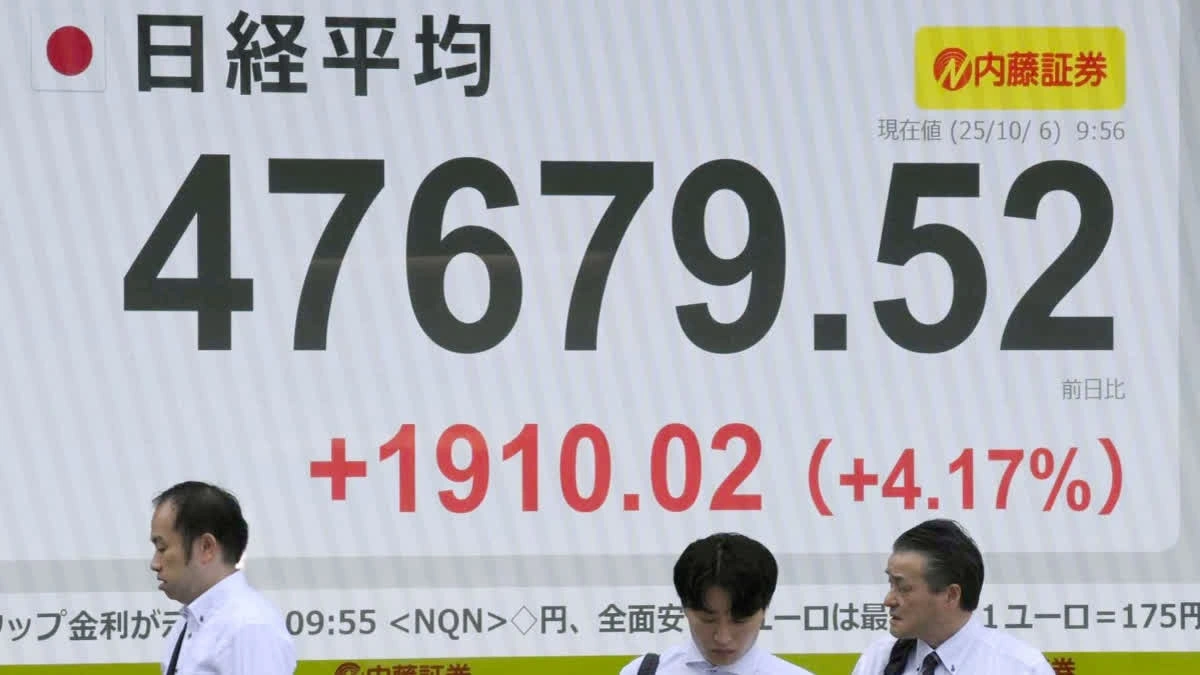Decoding the Nikkei 225 | More Than Just Numbers
Okay, let’s talk about the Nikkei 225 . You’ve probably heard of it – it’s Japan’s most famous stock index, like the Sensex or Nifty 50 here. But here’s the thing: simply knowing that it exists doesn’t tell you squat. Understanding the Nikkei’s movements , its components, and what it signals about the Japanese economy now that’s where the real value lies. That’s what we will be exploring here.
Why Should Indians Care About the Nikkei 225?

“So, what’s the big deal?” you might ask. “Why should I, sitting here in India, care about what’s happening on the Tokyo Stock Exchange?” Fair question. Well, here’s the thing: the global economy is intertwined. What happens in Japan ripples outwards, affecting everything from investment flows to the prices of electronics. The Nikkei 225 index serves as a bellwether for broader global economic trends. If it’s tanking, it’s a red flag. If it’s soaring, it suggests confidence. In fact, many global investment funds allocate capital based on the performance of indices like the Nikkei. Understanding this allows for more informed investment decisions.
Think about it: Japan is a major trading partner with India. Japanese companies invest heavily here, and vice versa. A strong Japanese economy (reflected in a strong Nikkei) generally means more investment in India. And a weak Japanese economy… well, you get the picture. Plus, many Indian companies have significant operations and export relationships with Japan. So, it’s not just an abstract number; it is linked to the Indian economy, and thus, affects our lives. The Tokyo Stock Exchange is not that far away when we look at economic impact.
How Is the Nikkei 225 Calculated, Anyway?
Now, let’s get a little technical. The Nikkei 225 isn’t calculated like some other indices, which use market capitalization (the total value of a company’s outstanding shares). Instead, it’s a price-weighted index . That means that companies with higher share prices have a bigger influence on the index than companies with lower share prices. I initially thought this was straightforward, but then I realized the implication: a single high-priced stock can disproportionately move the Nikkei. One needs to be aware of this while looking at the index.
What does that mean in practice? Well, let’s say a giant tech company with really expensive shares has a good day. The Nikkei jumps, even if lots of other companies in the index are having a mediocre day. This price-weighted methodology can sometimes make the Nikkei a bit… quirky. But it also means it can be more reactive to changes in investor sentiment towards the big players in the Japanese market.
Key Sectors and Companies That Drive the Nikkei
So, who are these big players? The Nikkei isn’t just a random collection of companies. It’s heavily weighted towards sectors like technology, manufacturing, and consumer goods. Think about brands like Toyota, Sony, and SoftBank. These are the kinds of companies that can really move the needle. These firms have the power to shape the index’s direction. But, as of late, there has been a shift towards tech, with companies like Sony Group Corp playing an increasingly prominent role.
Keep an eye on these giants. Their performance often gives clues about the overall health of the Japanese economy and the direction of the Nikkei. A lot of analysts track these companies and their impact on the Japanese stock market .
Beyond the Daily Number | What the Nikkei Really Tells Us
Okay, so the Nikkei went up or down today. Big deal, right? Wrong. What fascinates me is how the Nikkei is a barometer of investor confidence in Japan. It reflects not just current economic conditions but also expectations about the future. A rising Nikkei suggests investors are optimistic about the prospects for Japanese companies and the Japanese economy. A falling Nikkei… well, you can guess. This is valuable for those looking for investment opportunities in Japan .
But, it’s not foolproof! Sometimes, the Nikkei can be misleading. It might be reacting to short-term factors, like changes in interest rates or currency fluctuations, rather than reflecting the underlying strength of the Japanese economy. The key is to look at the Nikkei in context, alongside other economic indicators, to get a more complete picture.
How to Track and Analyze the Nikkei 225
Alright, so you’re intrigued. You want to keep an eye on the Nikkei. How do you do it? Easy. There are tons of financial websites and apps that track the Nikkei in real-time. Google Finance, Yahoo Finance, Bloomberg – take your pick. Many Indian brokerage platforms also provide access to global indices, including the Nikkei. Remember to check the performance trends and the daily figures for better insight.
But just tracking the number isn’t enough. You need to understand why it’s moving. Read the news, follow analysts who cover the Japanese market, and learn about the companies that make up the index. It’s about connecting the dots. Consider the interplay between the Japanese Yen and the Nikkei. And, of course, remember what we discussed earlier regarding the methodology of calculating the index, as this can often determine movements.
The Nikkei 225 | An Indian Investor’s Perspective
Here’s the thing for the Indian investor. The Nikkei 225 futures , Nikkei 225 options , and ETFs tracking the Nikkei can all be potential tools for diversifying a portfolio. However, these are not without risk. Currency fluctuations, geopolitical events, and changes in the Japanese economy can all impact the returns. Doing your due diligence is absolutely critical. For many, ETFs tracking the Nikkei provide a simple way to gain exposure to the Japanese market without having to pick individual stocks. But always remember: diversification doesn’t eliminate risk; it only mitigates it.
What I think is most interesting is how the Nikkei reflects Japan’s unique economic challenges and opportunities. From its aging population to its innovative tech sector, Japan presents a fascinating case study for any investor. Remember to research various Nikkei 225 companies before investing.
FAQ About the Nikkei 225
What exactly is the Nikkei 225?
It’s Japan’s main stock index, tracking the performance of 225 of the country’s largest companies listed on the Tokyo Stock Exchange.
How does it differ from other indices?
Unlike market-cap weighted indices, it’s price-weighted, meaning higher-priced stocks have a bigger influence.
Why is the Nikkei important for Indian investors?
Japan is a major trading partner, and the Nikkei reflects the health of the Japanese economy, impacting investment flows.
Where can I track the Nikkei’s performance?
Financial websites like Google Finance, Yahoo Finance, and Bloomberg all provide real-time data.
Can I invest directly in the Nikkei from India?
Yes, through ETFs and certain brokerage platforms that offer access to international markets. Remember to check all the relevant details beforehand.
What are the major risks of investing in the Nikkei?
Currency fluctuations, geopolitical events, and economic changes in Japan can impact returns.
So, there you have it. The Nikkei 225 isn’t just a number; it’s a window into the Japanese economy and a potential tool for global investors. Keep an eye on it, do your research, and understand the story it’s telling. You might be surprised at what you learn.













